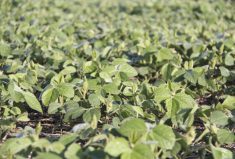Introducing soybeans into a developing country’s agriculture community is more complex than just putting the seeds in the ground.
It also requires a major shift in thinking in relation to crop production and management, according to a University of Illinois agriculture economist.
Peter Goldsmith says only with this shift in thinking will the new crop meet expectations of increasing profits and better pay for workers.
“Convincing farmers in developing countries to grow soybean as a commercial crop involves a change in how they farm,” said Goldsmith. “It will be different than what they’re used to. It may require new equipment and training. Farmers who have been growing native staples like cow peas for generations have tacit knowledge about the seed, how to store it or where to buy it locally next year, the best row spacing, and other production details.”
Read Also

Canadian soybean sector looks for growth and stable ground
Soy Canada eyes newer markets, trade partners to grow demand for Canadian soybeans and buffer industry against trade uncertainty shocks.
It’s only when these practices are adopted that enough profit is left on the table for improvements to quality of life. Under the lowest-input scenario there was no profit at all as a result of adopting soybean.
“To me, the traditional low-input scenario in northern Ghana is unacceptable,” Goldsmith says. “Asking farmers to grow soy without inputs is like giving them a tractor with three wheels or a pump with no handle. The outcome is going to be bad. Farmers will get frustrated, produce one crop and then stop. It’s a waste of donor dollars.”
Goldsmith says his findings from the three scenarios aren’t pessimistic about soybean catching on in developing countries. Rather, it is a caution to be realistic and appropriately investing in these programs.



















